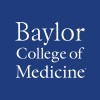
Phase I Dose-finding and Preliminary Efficacy Study of the Istodax® in Combination With Doxil® for...
LymphomaT-Cell Lymphoma1 moreThis a multi-center, single arm, open-label, Phase I dose-finding and preliminary efficacy study of the combination of the histone deacetylase inhibitor romidepsin (Istodax®) in combination with doxorubicin HCl liposomal (Doxil®) for adult patients with relapsed or refractory cutaneous T-cell lymphoma after at least 2 lines of skin-directed therapy or one prior line of systemic therapy. Patients will be treated with Doxil 20mg/m2 on day 1 and romidepsin 8-14mg/m2 on days 1, 8 and 15, every 28 days, until 2 cycles beyond the best response, 8 cycles, disease progression or intolerability whichever comes first. Importantly, doxil is administered prior to romidepsin on day1 of each cycle. Patients will be followed until disease progression or death whichever comes first.

ECHELON-2: A Comparison of Brentuximab Vedotin and CHP With Standard-of-care CHOP in the Treatment...
Anaplastic Large-Cell LymphomaNon-Hodgkin Lymphoma1 moreThis is a double-blind, randomized, multicenter, phase 3 clinical trial to compare the efficacy and safety of brentuximab vedotin in combination with CHP with the standard-of-care CHOP in patients with CD30-positive mature T-cell lymphomas.

Open-label Phase 3 BTK Inhibitor Ibrutinib vs Chlorambucil Patients 65 Years or Older With Treatment-naive...
Chronic Lymphocytic LeukemiaSmall Lymphocytic LymphomaA Randomized, Multicenter, Open-label, Phase 3 Study of the Bruton's Tyrosine Kinase Inhibitor PCI-32765 versus Chlorambucil in Patients 65 Years or Older with Treatment-naive Chronic Lymphocytic Leukemia or Small Lymphocytic Lymphoma.

Intensive Chemo-immunotherapy as First Line Treatment in Adult Patients With Peripheral T- Cell...
LymphomaT-Cell1 morePeripheral T cell lymphomas (PTCL) are a rare hematologic disease. Five-year overall survival (OS) of PTCL patients (pts) ranges between 20 and 30%. Allogeneic stem cell transplantation (allo-STC) may have a curative role for these pts but its toxicity is high when myeloablative conditioning is used. Reduced intensity conditionings (RIC) can decrease transplant related toxicity and mortality. The investigators have recently proved feasibility and potential efficacy of a RIC regimen in relapsed PTCL patients. We want to investigate whether it is possible to improve the outcome of alk negative PTCL pts, stage II-IV at diagnosis, by intensifying the therapeutic approach. The intensification will be obtained by combining intensive chemotherapy, alemtuzumab (anti-CD52 humanised antibody) and auto- or allo-SCT in pts aged between 18 and 60 years (Clinical Study A) or adding alemtuzumab to standard chemotherapy (CHOP) in pts aged between 61 and 70 years(Clinical Study B).

Rituxan + BEAM and Auto Stem Cell Transplant for High Risk Lymphoma or Hodgkin's Disease
LymphomaHodgkin's DiseaseHigh-dose chemotherapy followed by autologous (the patient's own) peripheral blood (circulating blood) stem cell (cells that divide to form white cells, red cells and cells that help clot) transplantation is a conventional treatment for patients with lymphoma (cancer of lymph glands) and Hodgkin's disease (cancer of lymph glands) after first relapse (recurrence of disease). For patients who did not have a complete response after traditional chemotherapy, the chance is high that the tumor will return even after high-dose chemotherapy. To improve the response and decrease the chance of relapse, doctors have used rituximab, an antibody that kills lymphoma cells, both before and after transplantation. These doctors have reported that more patients had control of the tumor for an extended period of time using rituximab with high-dose chemotherapy with autologous stem cell transplantation. How widely this is applicable is not known. The purpose of this clinical research trial is to confirm that there is a good control of tumor in patients with lymphoma or Hodgkin's disease treated with rituximab and conventional stem cell transplantation.

Study of OFATUMUMAB as Part of the Scheme of Reduced Intensity Conditioning in High Risk Non-Hodgkin...
B-Cell LymphomasThe aim of this study is rate of acute graft-versus-host disease II-IV measured at day +365according to conventional criteria (Przepiorka et al. 1995) in patients with high risk non-Hodgkin lymphoma B subjects with Allogeneic Stem Cell Transplant

Safety Study of CC-292 and Rituximab in Subjects With Chronic Lymphocytic Leukemia/Small Lymphocytic...
Leukemia Lymphocytic Chronic B-CellThis is a dose finding study using a 3 + 3 dose escalation and expansion design to determine a Not Tolerated Dose (NTD), Optimal Biological Effect Dose (OBE) and / or Maximum Tolerated Dose (MTD). These data will be used to establish a Recommended Phase 2 Dose (RP2D) for the combination of CC-292 and Rituximab in subjects with CLL.

A Study of PCI-32765 (Ibrutinib) in Patients With Refractory Follicular Lymphoma
LymphomaThe purpose of this study is to evaluate the efficacy and safety of PCI-32765 (ibrutinib) administered to patients with chemoimmunotherapy-resistant follicular lymphoma (FL).

Evaluation of Plerixafor Plus G-CSF to Mobilize and Collect 5×10^6CD34+ Cells/kg in Non-Hodgkin's...
Non-Hodgkin's LymphomaThe study is to determine if NHL patients mobilized with G-CSF (10 µg/kg/day [GRAN® only]) plus 0.24 mg/kg/day of plerixafor are more likely to achieve a target number of ≥5 × 10^6 CD34+ cells/kg in 4 or fewer days of apheresis than NHL patients mobilized with G-CSF plus placebo.

Improve the Survival Rate of Chinese Children and Adolescents With Non-Hodgkin's Lymphoma
Childhood Non-Hodgkin's LymphomaNon-Hodgkin's lymphoma is an aggressive malignance disease in children and adolescents. This study was designed to evaluate the efficacy and toxicity of the modified NHL-BFM-90 protocol in Chinese children and adolescents with Non-Hodgkin's lymphoma.
